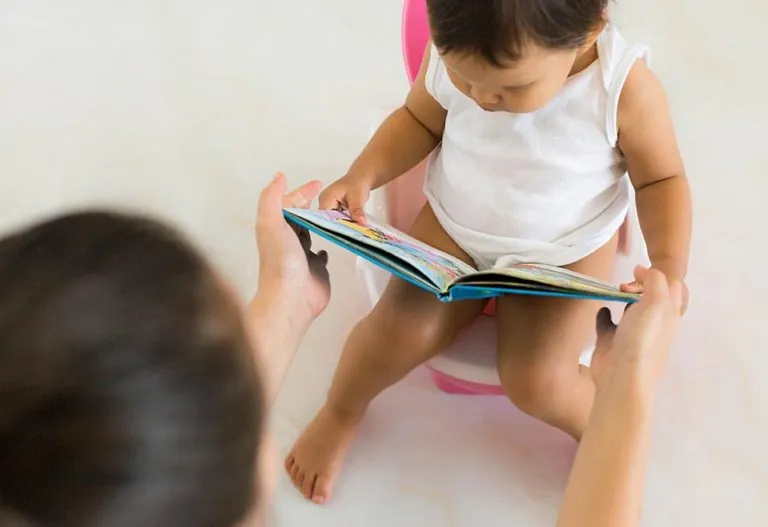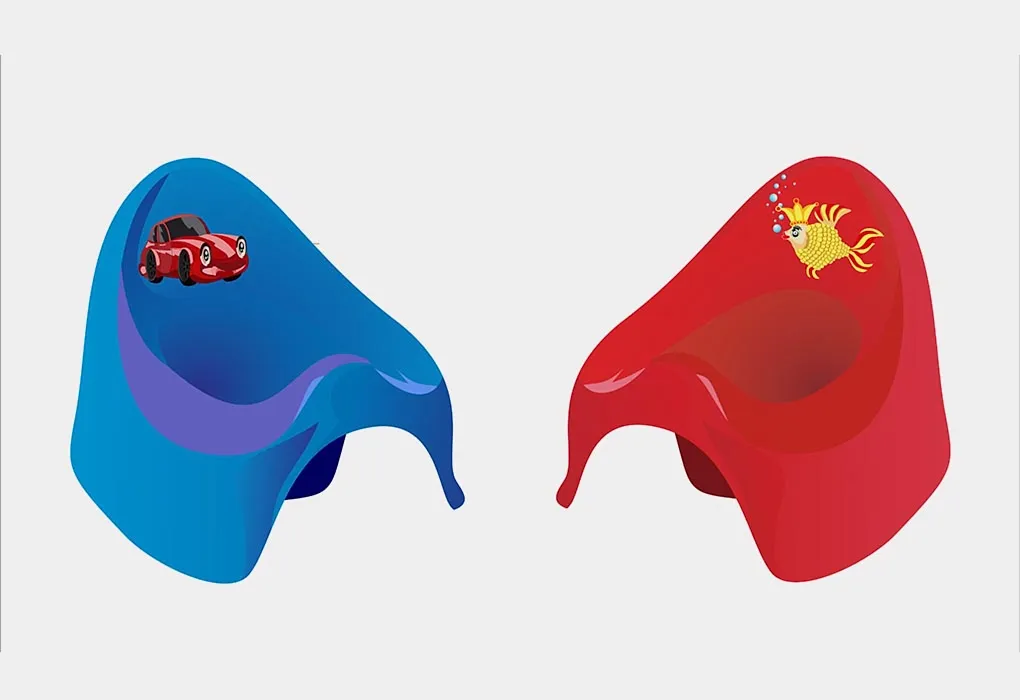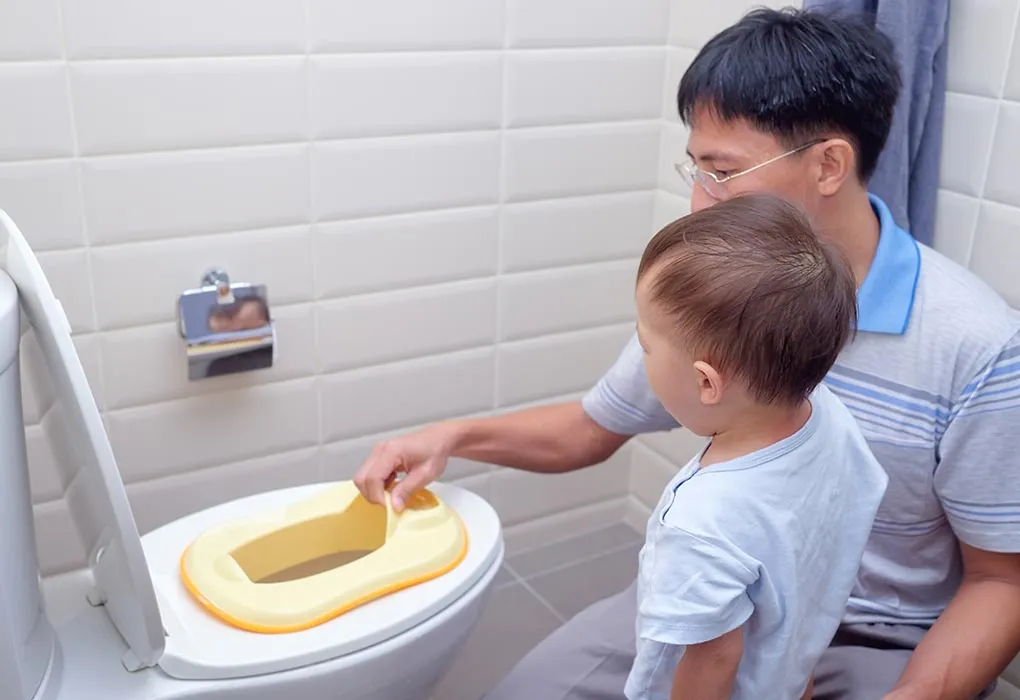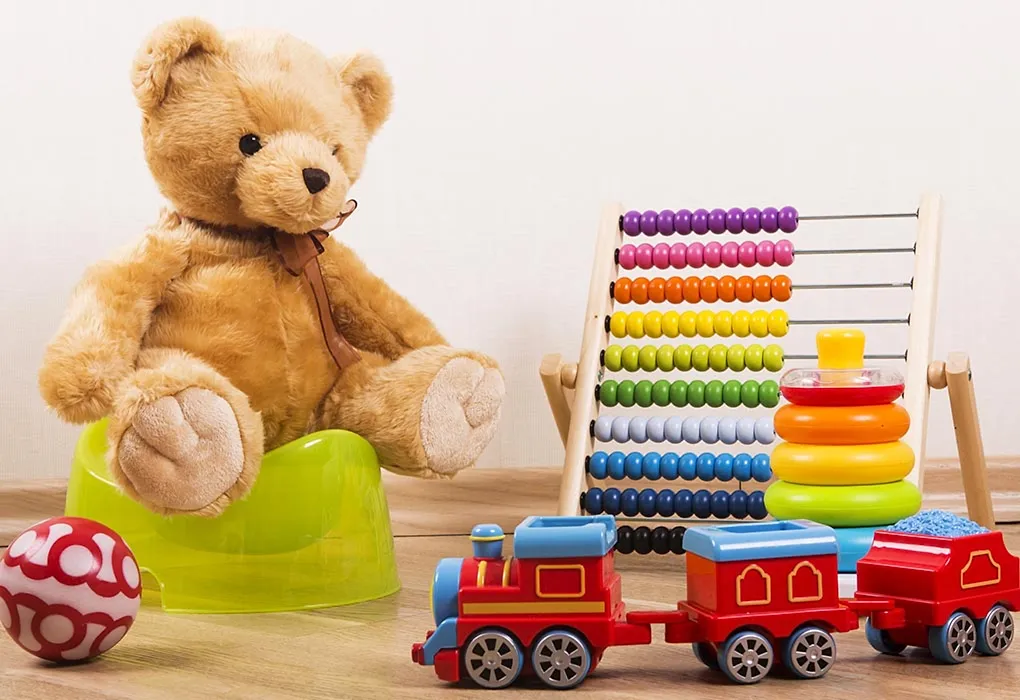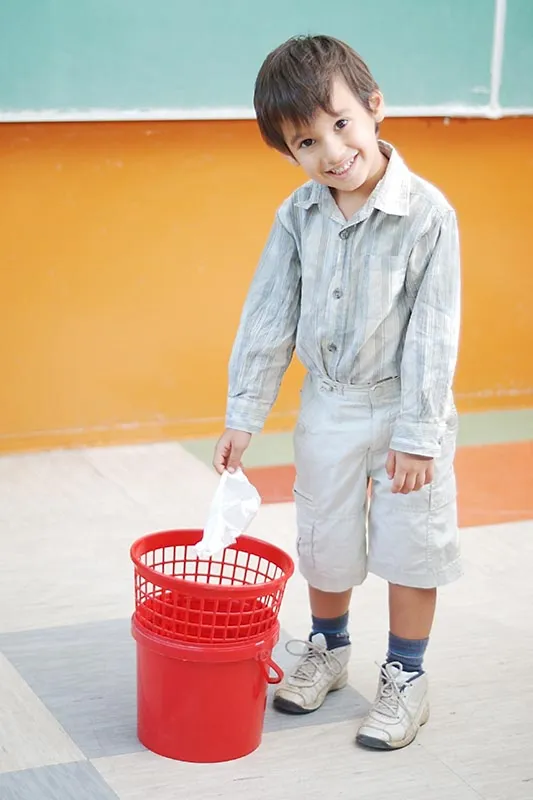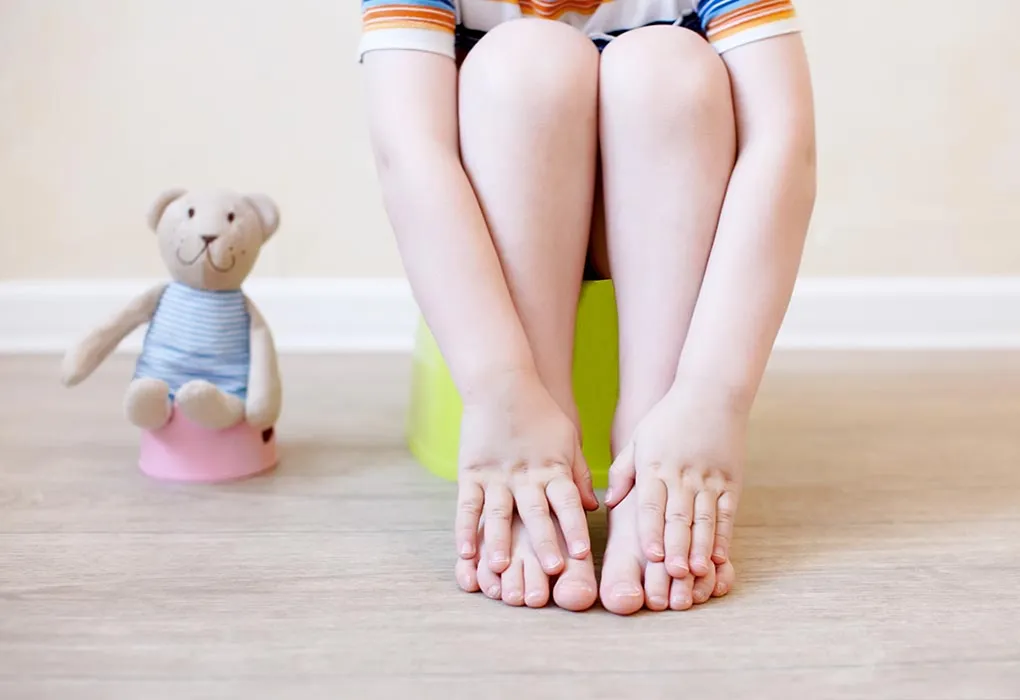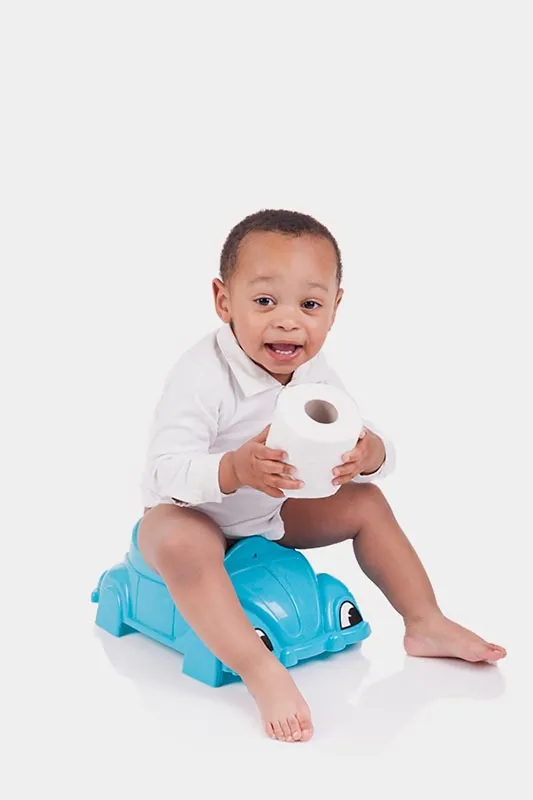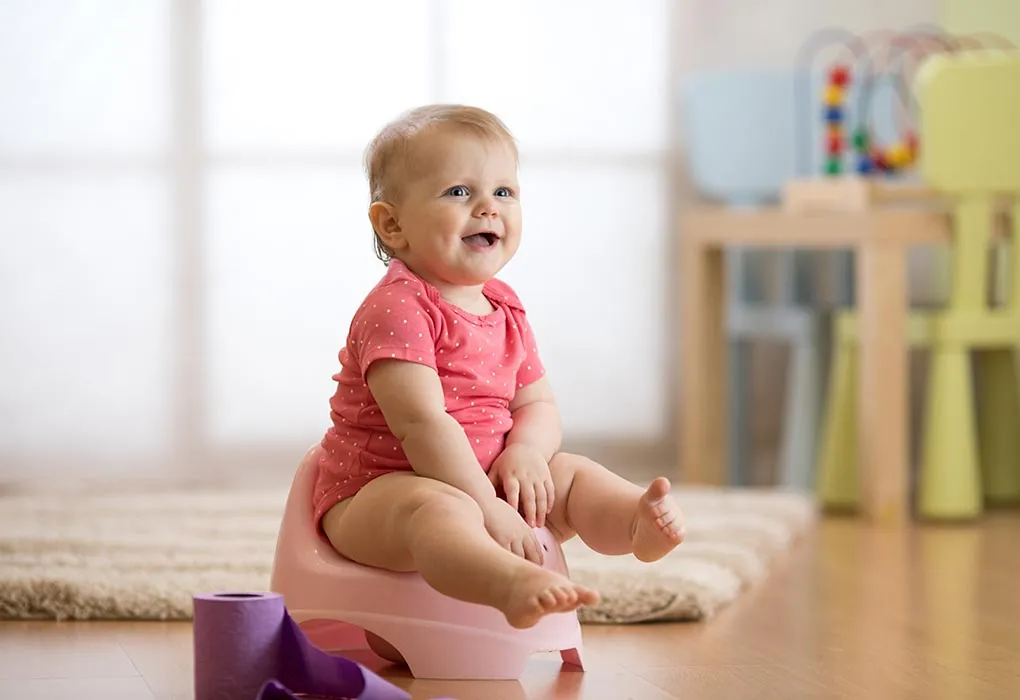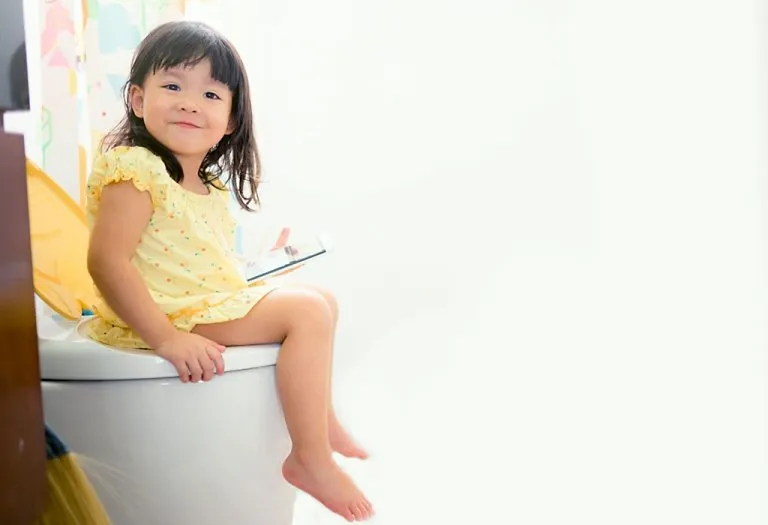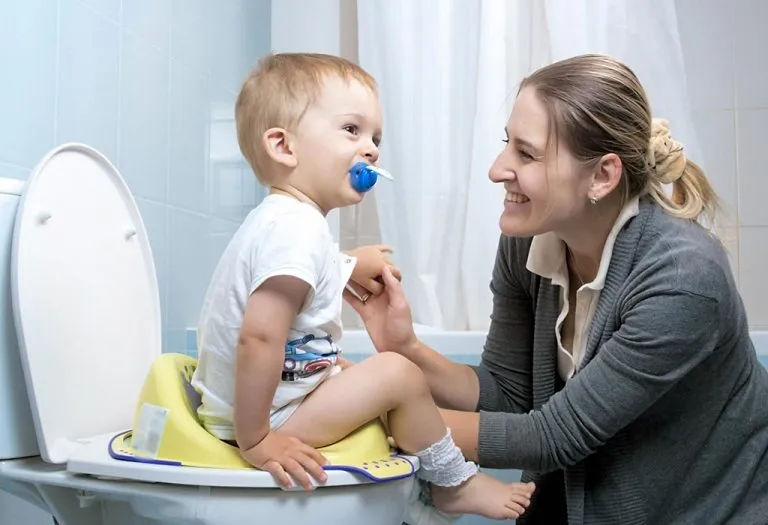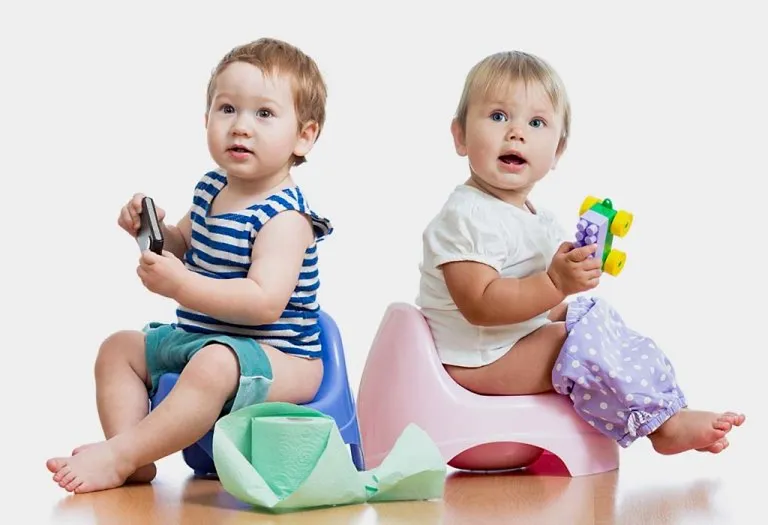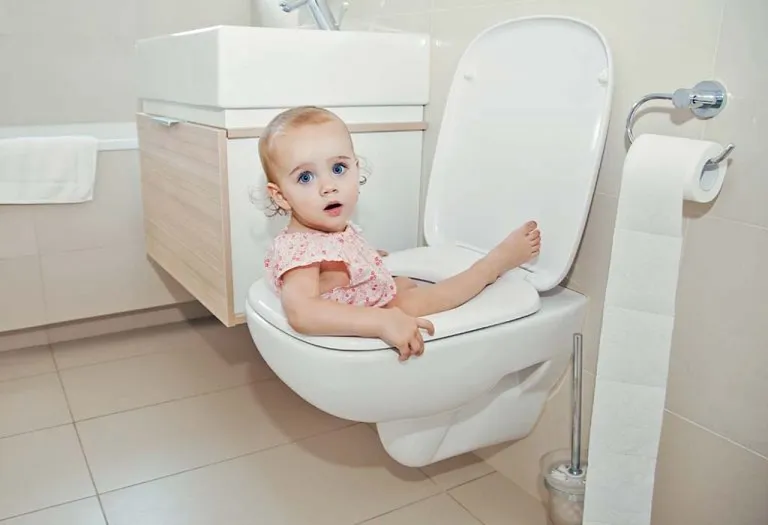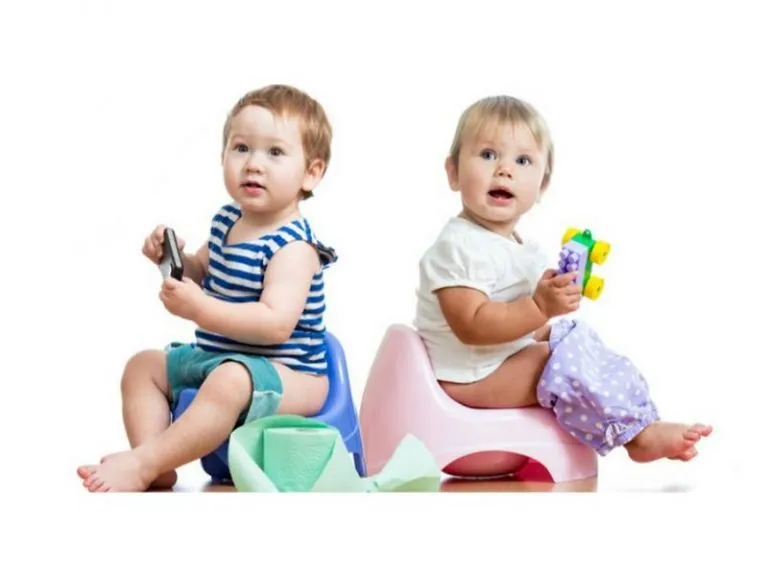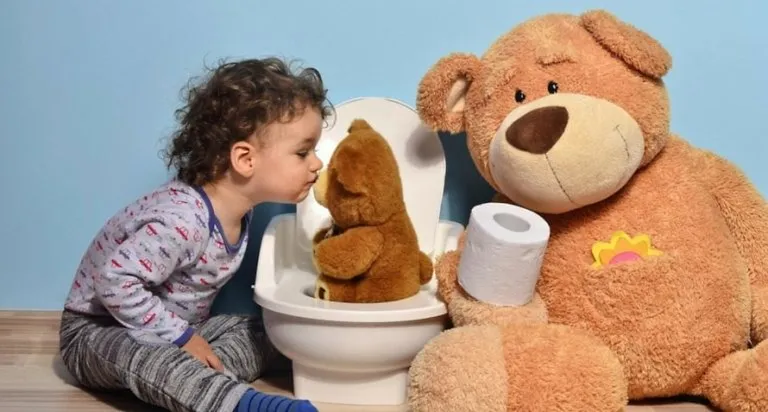20 Potty Training Games for Toddlers

Potty training is a challenge, and it can be frustrating for both the parent and the child while going through this process. There are bound to be minor triumphs, a few setbacks, and plenty of accidents along the way, so it is important to keep a positive attitude and make the learning process fun for you and your child. Incorporating potty training games into your routine can make the experience more engaging and less stressful. These games to play while potty training encourages your child to practice regularly while keeping them entertained. Patience, consistency, and a playful approach can help create a smoother transition during this important developmental milestone.
Fun Potty Training Games to Play With Your Toddler
Children are naturally curious and are willing to learn if things are presented to them in a fun way, and potty training is no different. Teach your child how to use the potty with these fun and simple toilet training games.
1. Magic Potty
Add a bit of blue food coloring to the water in your potty, and watch the fun as your child notices the water turn green after yellow pee is added to it. You can also get potty training stickers that are blank when dry, but when your little one pees on it, it will show the image of a butterfly, train, flower, and others. These make for some exciting baby potty training games that will keep your little one interested in using the bathroom.
2. Potty Scavenger Hunt
Curious children will enjoy playing potty scavenger hunt as they will need to seek out the potty-related objects that you have hidden around the house. You can explain what they are for once all the items are found. Showing your child what these things are used for will also make her more interested.
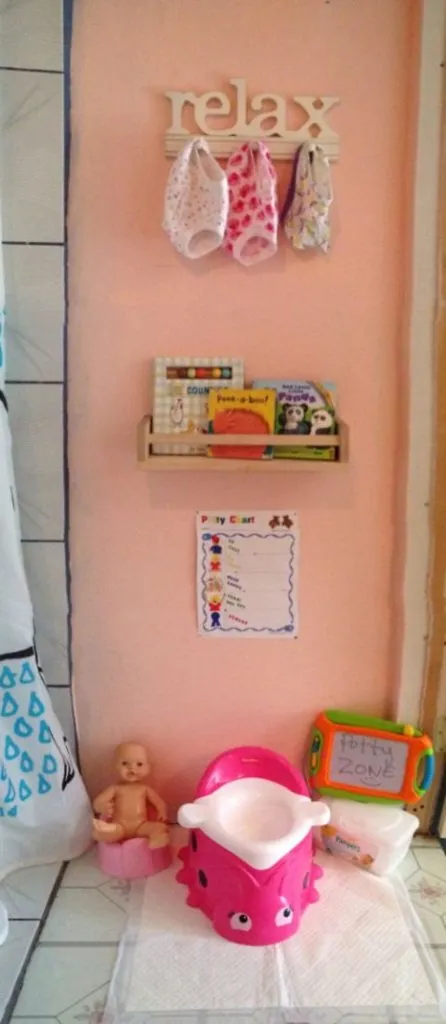
Image Credit: Pinterest
3. Bathroom Explorer
Make a game out of exploring the bathroom and talking to your child about what certain things are for. You can even allow her to come to the bathroom with you and watch how things go. Once she is a bit more familiar with the objects and their names, you can always ask her to assist you by asking for simple things like to give you some toilet paper or help you to flush the pot.
4. Potty Training Race
Keep your child’s potty chair in an easily accessible room. Show it to your child and say “time to potty!” You both need to race to the potty chair. Whoever sits down first will be declared the winner. You can mix things up by moving the potty chair to different rooms or more challenging places. Your child can also be encouraged to beat her previous timing if she is competitive.
5. Potty Seek and Find
Children who are uncomfortable when they are outside the home and refuse to go potty anywhere else can be made to feel comfortable with this game. All you need to do is allow your child to pick out a toy to help her find the potty. Place her potty chair in a room without her knowledge. When she finds the potty with the help of her friend, you can then show her how to use the potty with the same toy. Get her to use the potty chair in the new room the same way her Potty Time friend did. This technique can also be used outside.
6. Which Is Faster?
When you are changing your child’s diaper, set a timer on your phone and talk to her about how long it takes to change the diaper and how messy it can be. After changing your child into pull-up diapers, you can ask her if she wants to try playing “Time to Potty” so that she can see that going potty in the potty chair with her new pants is faster and cleaner than going potty in her diapers.
7. Sing a Song
It is not an easy transition to make for a child when she has to shift from the soft and comfortable diapers to the cold and hard potty. You can encourage and make this transition more relaxed and fun by making up a song about it. The song can explain the role of food going in from the mouth, and what happens to it on the way down until it comes out as a potty.
8. Blow Bubbles
When first sitting on the potty, your child is not going to be comfortable, nor is she going to be interested in keeping still. You can hand your child a bottle of bubbles and allow her to blow some bubbles to pass the time. Blowing bubbles stimulate the same abdominal muscles that are used to help push when taking a poop, so if your child is unable to go due to discomfort, this method will help.
9. Chuck the Nappy
Children can grow comfortable with their nappies, but it is not something that they can hold onto forever. Get your little one used to the idea of discarding her own nappies by placing a basket in the living room and asking your child to throw in as many diapers as possible.
10. Log It
Children sometimes need to know that going to the potty is a normal thing to do. To help with this, you can make a chart with all the family members’ names on it, including the pets, and ask your child to record every time someone goes to the potty. Children soon learn that everyone does it.
11. Teach Your Toy
Have your child explain to her favourite toy why she needs to go potty in the potty chair, and have her train her toys. Children will undoubtedly make a game of it, but it will also help them understand the concept of using the toilet themselves. It is, as they say, you learn while you teach.
12. Potty Phone Call
Pretend to make a “phone call” to a favorite family member, friend, or even a toy after your child successfully uses the potty. You can act out the conversation, sharing the exciting news of their accomplishment. This adds an element of fun and reward, as toddlers love the idea of sharing their achievements with others, making potty training a more joyful experience.
13. Decorate the Potty Chair
Having your child decorate the potty chair will make her feel more comfortable and special when she needs to go potty. In fact, it will give her a sense of pride and excitement every time she sees it.
14. Aim for the Cheerios
This is one of the more fun potty training games for boys. Toss a few Cheerios into the potty and then have your little one aim for the cheerios.
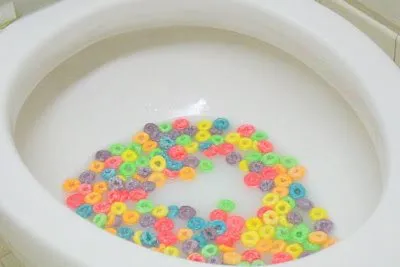
Image Credit: Pinterest
15. The Scent of Potty Time
Most girls are fascinated by scented soaps so tell your daughter that she can use the fancy scented soaps to wash her hands after she uses the toilet correctly. This makes for one of the more motivating potty training games for girls.
16. Potty Chart
Create a colorful potty chart where your child can add stickers or draw a small image each time they successfully use the potty. Every time they reach a certain number of stickers, they can earn a small reward, like a favorite snack or extra playtime. This visual representation of their progress will keep them motivated and excited about potty training, making it a fun and rewarding experience for both you and your child.
17. Potty Prizes
Incorporate a reward system with small prizes for every successful potty trip to motivate your toddler. Set up a basket filled with inexpensive toys, stickers, or healthy snacks, and allow your child to choose a prize each time they use the potty. This positive reinforcement encourages consistent use of the potty while making the process exciting and rewarding, turning potty training into a fun game that keeps your little one eager to participate.
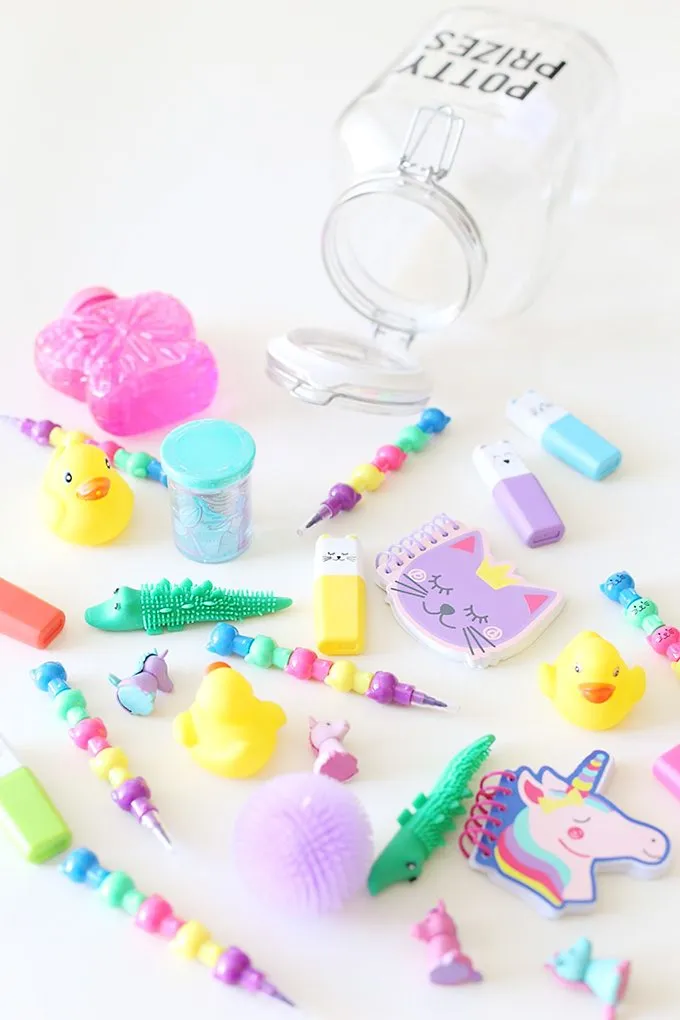
Image Credit: Pinterest
18. Understanding Wet and Dry
Help your child understand the difference between being wet and dry by using simple, tactile activities. Take two small towels, one wet and one dry, and let your child feel the difference between the two. Explain that staying dry is the goal during potty training, and they should aim to keep their clothes dry. You can reinforce this concept with fun games, like asking them to spot dry areas on a towel after using the potty, making the learning process more interactive and engaging.
19. Potty Puppet Show
Use puppets or stuffed toys to put on a potty training show for your toddler. Act out different potty situations, like using the potty or washing hands afterward, with the puppets. Your child can participate by helping the puppets learn, making it a creative way to teach the steps involved in potty training.
20. Potty Song and Dance
Create a special potty song or dance routine that you and your child can perform each time they successfully use the potty. This makes potty time feel celebratory and fun. You can even let your child come up with their own moves or lyrics, making them feel more involved in the process while reinforcing positive behavior.
How Do These Games Help With Potty Training?
Potty training games help by turning a potentially stressful process into an enjoyable one for your child. They encourage regular practice without making it feel like a chore, helping your child develop positive associations with using the potty. These games also promote consistency, which is key to successful potty training. By incorporating fun elements, your child may become more motivated to participate, reducing resistance or fear. Additionally, potty training games can improve communication between you and your child, making it easier to track progress and address any challenges that arise.
How to Use These Games Effectively
Using potty training games effectively can make a significant difference in how quickly and smoothly your child adapts to the process. The key is to use these games in a way that keeps your child engaged while reinforcing good habits. Below are a few tips on how to use these games to their full potential.
1. Keep the Games Age-Appropriate
Make sure the potty training games you choose are suitable for your child’s age and developmental stage. Simple, easy-to-understand games are more likely to capture your child’s interest and encourage participation.
2. Integrate Rewards and Positive Reinforcement
Incorporate small rewards like stickers or praise when your child successfully uses the potty during a game. This will motivate them to continue practicing and build confidence in their abilities.
3. Stay Consistent
Use the games regularly as part of your daily potty routine. Consistency helps your child understand the importance of the task while making it feel like a normal part of their day.
FAQs
1. Can potty training games be used for nighttime training?
Yes, potty training games can be adapted for nighttime training by focusing on activities that encourage your toddler to recognize their body’s signals during the night. Simple games like sticker charts for dry nights or small rewards for using the potty before bed can be effective.
2. Are potty training games suitable for reluctant toddlers?
Potty training games are ideal for reluctant toddlers as they help reduce the pressure of training. Games that involve role-playing with toys or interactive potty apps can make the process feel less intimidating and more playful.
3. Can potty training games work without rewards?
Yes, potty training games can still be effective without rewards. Games that involve visual cues like matching potty times to clock hands or fun songs can motivate toddlers by making the process enjoyable without needing physical rewards
4. How long should a potty training game last?
The duration of a potty training game should be short—around 5-10 minutes—to keep your toddler engaged without losing focus. Toddlers have limited attention spans, so quick, fun games that fit into their routine are most effective.
These were some of the many potty training tips and tricks. Children need motivation and encouragement when learning, so remember to be patient with them. Though it can be challenging, children are often easily distracted by the smallest and simplest of things, and training can always be made fun for them by using these games to your advantage. Using potty training games for kids will make it less stressful for both of you, so pick a game your child will like and get started.
References/Resources:
1. Potty training: How to get the job done; Mayo Clinic; https://www.mayoclinic.org/healthy-lifestyle/infant-and-toddler-health/in-depth/potty-training/art-20045230
2. How to potty train; NHS; https://www.nhs.uk/conditions/baby/babys-development/potty-training-and-bedwetting/how-to-potty-train/
3. Toilet Training; Nemours Kids Health; https://kidshealth.org/en/parents/toilet-teaching.html
4. Five do’s and don’ts of potty training your toddler; UC Davis Health Children’s Hospital; https://health.ucdavis.edu/children/patient-education/potty-training-children
5. Potty Training; American Academy of Pediatrics; https://www.healthychildren.org/English/ages-stages/toddler/toilet-training/Pages/default.aspx
6. Toilet Training; Johns Hopkins Medicine; https://www.hopkinsmedicine.org/health/wellness-and-prevention/toilettraining
7. The Right Age to Potty Train; American Academy of Pediatrics; https://www.healthychildren.org/English/ages-stages/toddler/toilet-training/Pages/The-Right-Age-to-Toilet-Train.aspx
Also Read:
Potty Training Ideas For Toddlers
Best Age for Potty Training Your Child
Potty Training Methods – Choose the Best One for Your Child
Potty Training with Underwear – When, Why and How to Start It?
Was This Article Helpful?
Parenting is a huge responsibility, for you as a caregiver, but also for us as a parenting content platform. We understand that and take our responsibility of creating credible content seriously. FirstCry Parenting articles are written and published only after extensive research using factually sound references to deliver quality content that is accurate, validated by experts, and completely reliable. To understand how we go about creating content that is credible, read our editorial policy here.






